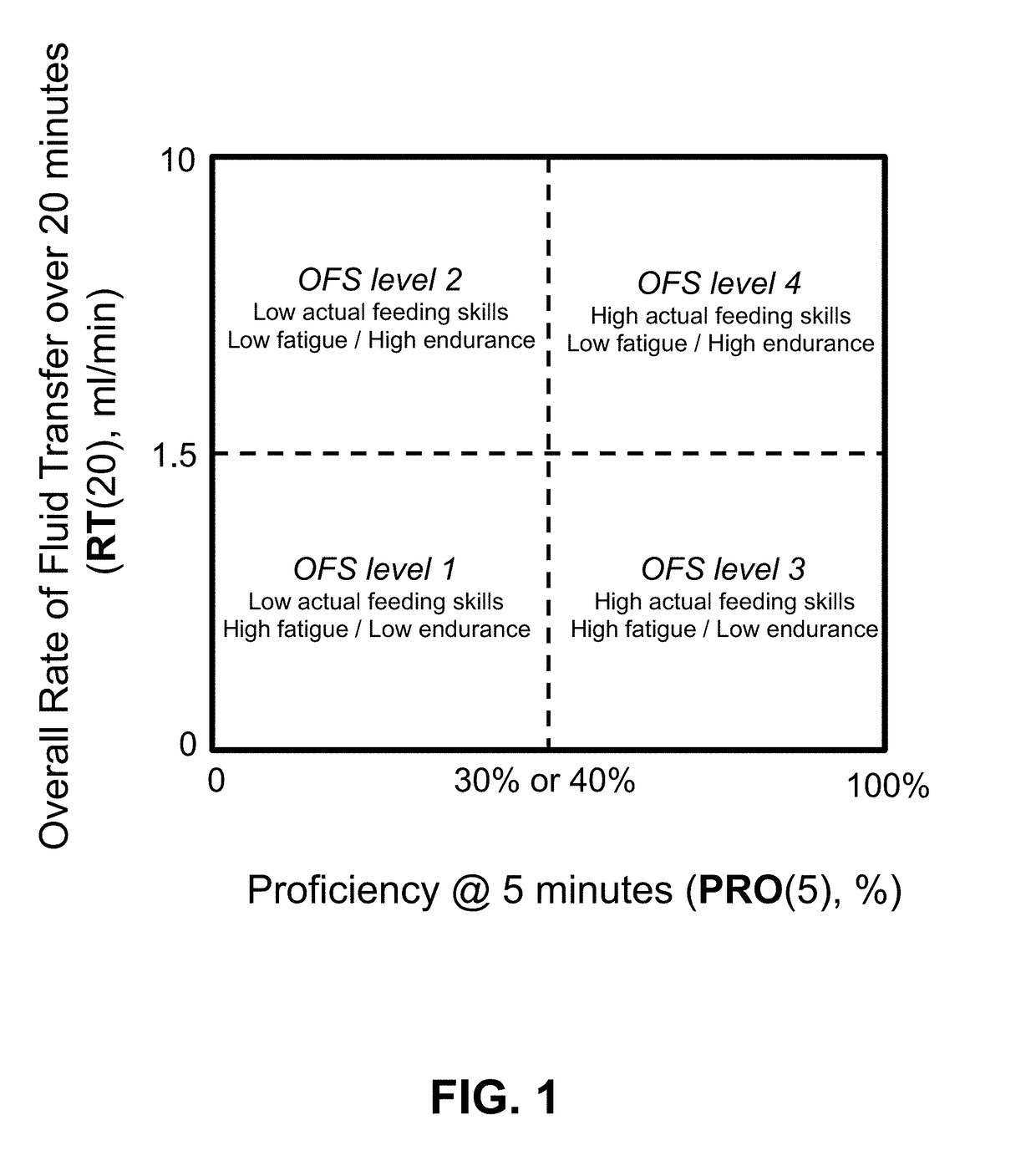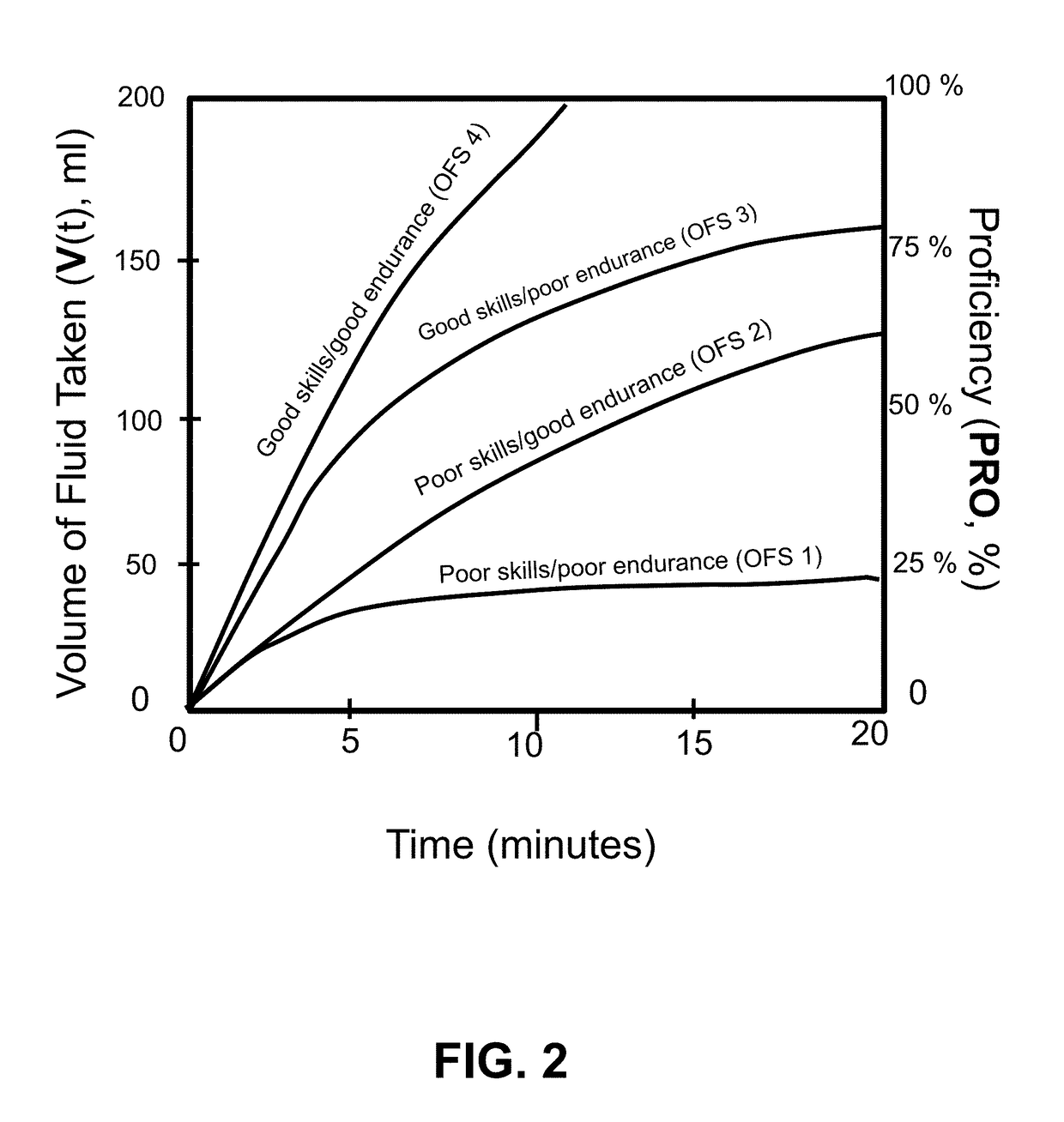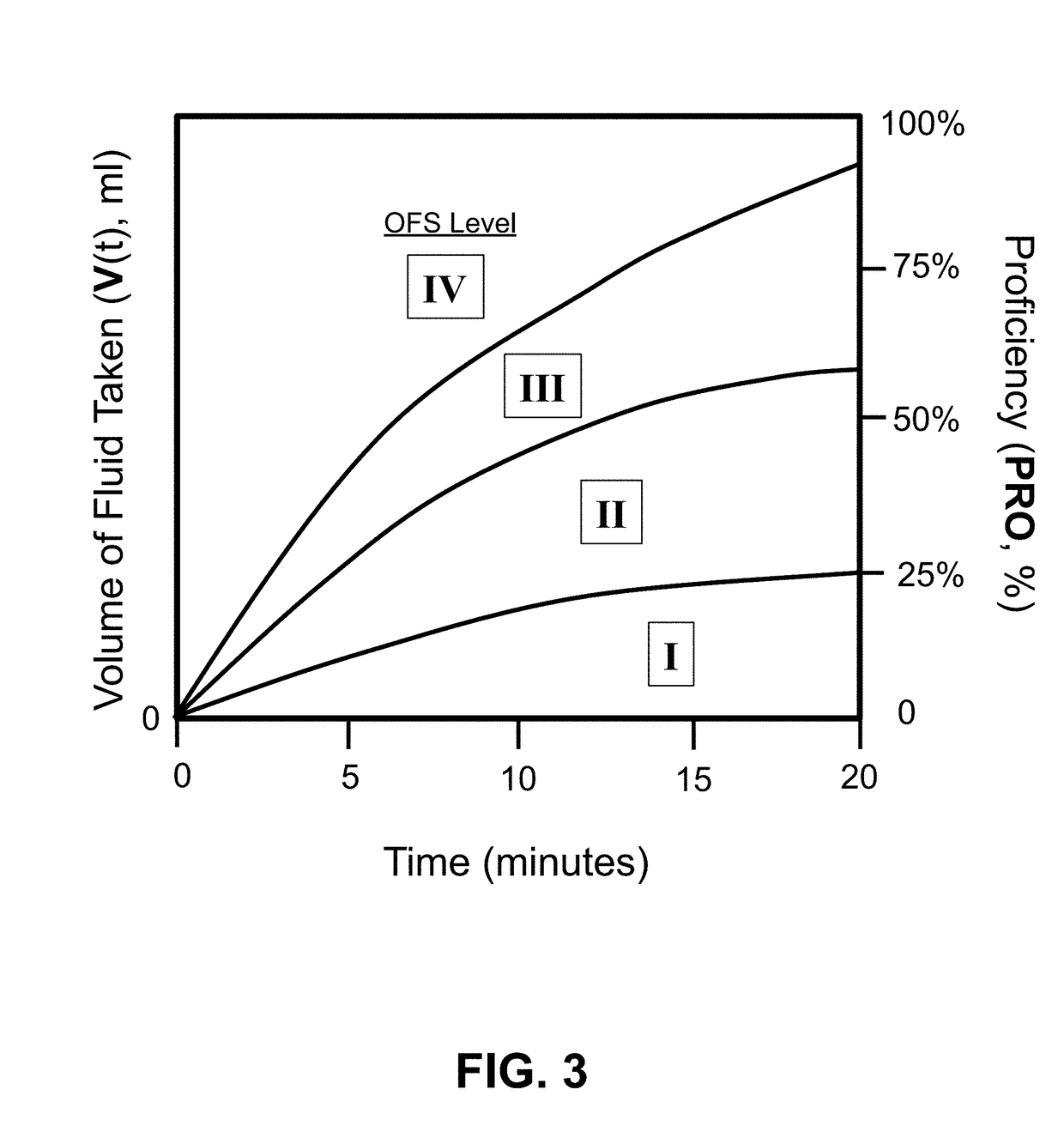System and methods for assessing a person's oral feeding skills during oral feeding
a system and method technology, applied in the field of oral feeding, can solve the problems of difficult to assess infants' oral feeding skills, difficult to bottle feed, and complex problems in bottle feeding
- Summary
- Abstract
- Description
- Claims
- Application Information
AI Technical Summary
Benefits of technology
Problems solved by technology
Method used
Image
Examples
Embodiment Construction
[0070]FIGS. 1-43 show examples of various embodiments of the present invention. Note: the term “smart device” or “remote device” refers to any type of wireless or wired smart phone (e.g., iPhone®), smart tablet (e.g. iPad®), laptop, personal computer (PC), or desktop data processing device, such as a Biopac® data collection unit, using a wireless protocol such as Bluetooth®.
[0071]Note: Infants may be categorized by their gestational age (GA) or birth weight. Preterm infants are born ≤36 weeks gestational age (GA) and differentiate between extremely preterm (<28 weeks), very preterm (28 to <32 weeks), moderate preterm (32-33 weeks), late preterm (34 to 36 weeks). Full-term infants range between 37 to 42 weeks gestation. By weight, extremely low birth weight infants are born <1000 g, very low birth weight between 1000 g to <1500 g, low birth weight between 1500 g and <2500 g, full term between 2500 and 4200 g.
[0072]Infant birth weight (Kg) generally increases with gestational age (wee...
PUM
 Login to View More
Login to View More Abstract
Description
Claims
Application Information
 Login to View More
Login to View More - R&D
- Intellectual Property
- Life Sciences
- Materials
- Tech Scout
- Unparalleled Data Quality
- Higher Quality Content
- 60% Fewer Hallucinations
Browse by: Latest US Patents, China's latest patents, Technical Efficacy Thesaurus, Application Domain, Technology Topic, Popular Technical Reports.
© 2025 PatSnap. All rights reserved.Legal|Privacy policy|Modern Slavery Act Transparency Statement|Sitemap|About US| Contact US: help@patsnap.com



